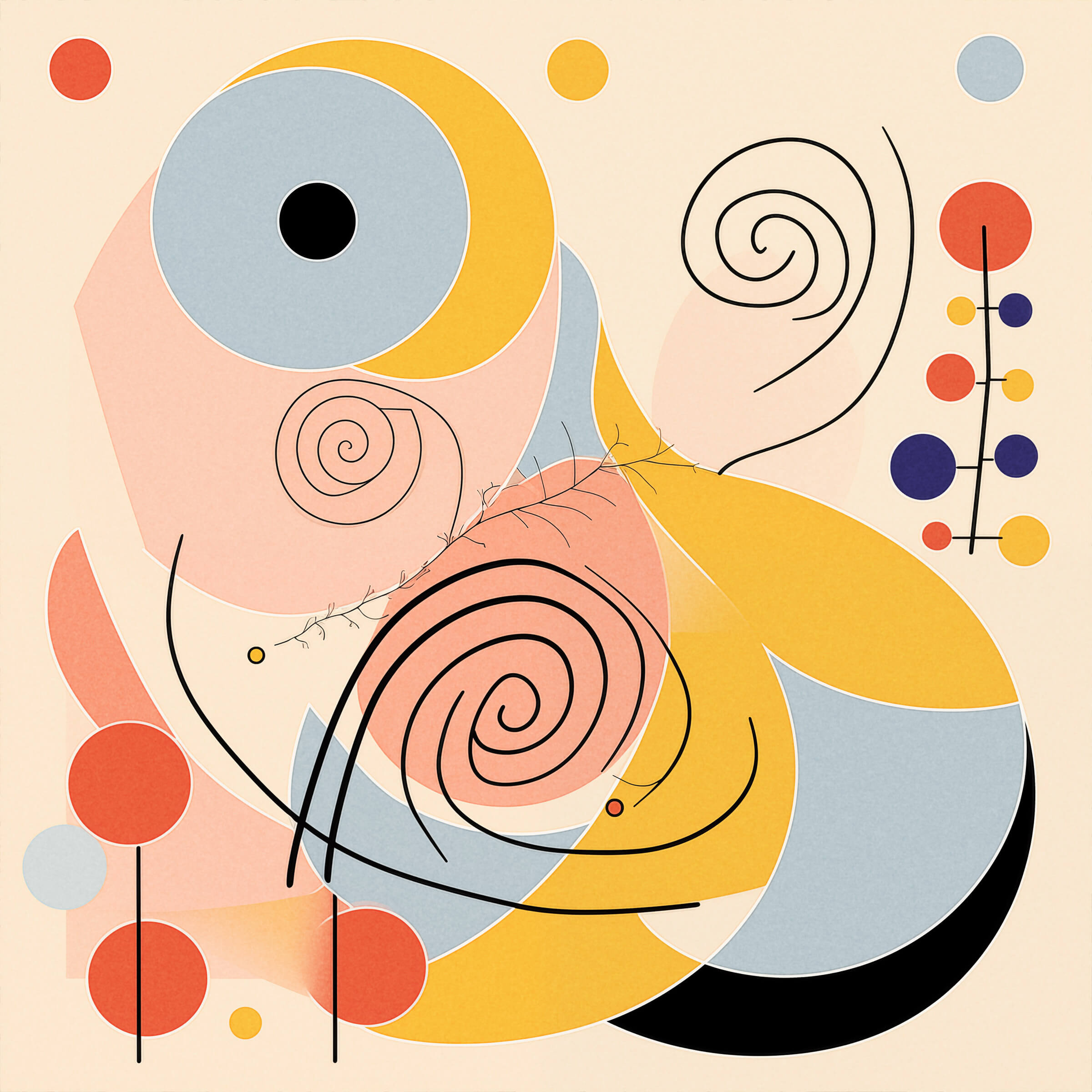
Fibonacci, Pascal and Golden Ratio Fun Facts
I’m about to dive deep into the source code of the universe, or at least, a few lines that represent the fascinating patterns we see all around us. Today’s spotlight is on the “divine proportion,” also known as the Golden Ratio and the numbers that make it possible. Hold tight, we’re going down the mathematical rabbit hole, but what awaits is a perfect example of the power and beauty of numbers (and not to be dramatic, but also THE UNIVERSE).
"The Fibonacci Sequence turns out to be the key to understanding how nature designs…" - Guy Murchie, Author of The Seven Mysteries of Life
Let's begin with the basics... There are patterns that emerge in math and one of these patterns is what makes all sorts of interesting shapes (like the golden spiral or golden rectangle). The number pattern we’ll focus on is called the Fibonacci sequence.
What is the Fibonacci Sequence?
It is an intriguing series of numbers, where each number is the sum of the two preceding ones. It starts with 0 and 1, then continues as 0, 1, 1, 2, 3, 5, and keeps going, extending infinitely.

One thing that makes this sequence particularly cool is its close relationship with the golden ratio (which makes all the golden shapes possible). This ratio is a key concept in geometry, and we can observe it throughout the natural world.
Let’s take a quick zoom-out and look at the discovery of this pattern in history. The sequence was named after the Italian mathematician Leonardo of Pisa, known by all as Fibonacci. He introduced this sequence in the Western world through his 1202 book "Liber Abaci." Interestingly, this numerical pattern had been previously noted in Indian mathematics, related to the structure of Sanskrit poetry. Fibonacci's work, which was used to accurately model rabbit population growth, brought it to the forefront of mathematical study. Later, 19th-century number theorist Édouard Lucas coined the term 'Fibonacci Sequence,' cementing its place in mathematical history.
The Fibonacci sequence is a universal tool, repeatedly surfacing in nature, art, and even human-made systems. Here are some prime examples.
Examples of the Fibonacci Sequence
- In nature, the sequence appears in forms like the arrangement of leaves around a stem, the pattern of seeds in a sunflower, or the spirals of a pinecone or a snail's shell. These patterns demonstrate how the Fibonacci sequence helps organize biological structures with maximum efficiency.
- In honeybees, the Fibonacci sequence is evident in their family tree. A male bee has one parent, while a female bee has two. The pattern of ancestors follows the Fibonacci sequence, with each bee having a number of ancestors equal to the sum of the ancestors in the previous two generations.
- In art, many artists and architects use the golden ratio, related to the Fibonacci sequence, to create visually appealing compositions. This ratio can influence the proportions of a painting or the dimensions of a building, resulting in a work that mirrors the natural balance found in the sequence.
- In music, while not a fundamental rule, the Fibonacci sequence occasionally aligns with musical patterns, like the number of scales or the timing in pieces. For example, some musical scales have eight notes, a Fibonacci number. However, this is more of an intriguing coincidence than a strict musical principle.
What is the Golden Ratio?
Let’s connect these numbers to a visual pattern. Despite the changing numbers in the Fibonacci sequence, the ratio between them remains consistent. This ratio, known as the golden ratio, creates a spiral when plotted on a graph (the famous Golden Spiral).
The golden ratio is an irrational number represented by (1 + √5)/2, roughly 1.618.

It's a ratio found in mathematics, geometry, art, and architecture, often denoted by the Greek letter phi (φ). This ratio appears in the spacing of digits in the Fibonacci sequence. The ratio also makes up the side length of the Golden Rectangle, approximately 1:1.618. More precisely, a golden rectangle is a rectangle that can be cut up into a square and a rectangle similar to the original one you just cut up.

Now, let's take a step back and see how this 'Divine Proportion' has played a role throughout history. The golden ratio wasn't just a mathematician's daydream; it was a blueprint used by some of history's greatest architects, masons and artists. This ratio has been leaving its golden fingerprint across time, captivating human imagination with its seemingly perfect balance.
Here’s some golden examples of this ratio in action:
- The Great Pyramid of Giza, one of the Seven Wonders of the World, exhibits the Golden Ratio in its design.
- The Parthenon in Athens, Greece, is believed to have been constructed using the Golden Ratio, creating a harmonious and aesthetically pleasing structure.
- Chartres Cathedral in France and Notre Dame in Paris are also cited as examples of the Golden Ratio being used in their design.
- The Great Mosque of Kairouan in Tunisia is said to have been created using the Golden Ratio.
What is Pascal’s Triangle?
But the mathematical connections don't stop there. Enter Pascal’s Triangle, a numerical structure with its own ties to the Fibonacci sequence. Pascal's Triangle begins with a solitary 1 at the apex and expands downwards, with each number being the sum of the two directly above it. Interestingly, if you sum up the diagonally aligned numbers throughout this triangle, a hidden gem appears: the Fibonacci sequence.

This pattern within a pattern isn't just a quirky coincidence; it's a testament to how interconnected mathematical concepts are. Finding the Fibonacci sequence hidden in Pascal’s Triangle shows us that patterns in mathematics often overlap, revealing a deeper harmony in the world of numbers that we're still unraveling.
Let’s sum it all up (math pun!), while much of our reality seems random, patterns like the golden ratio and the Fibonacci sequence are tangible examples of order within chaos. That is pretty inspiring in this humble writer's opinion. These patterns are stark reminders of the universe's wonder and how much we have yet to understand as a species.





